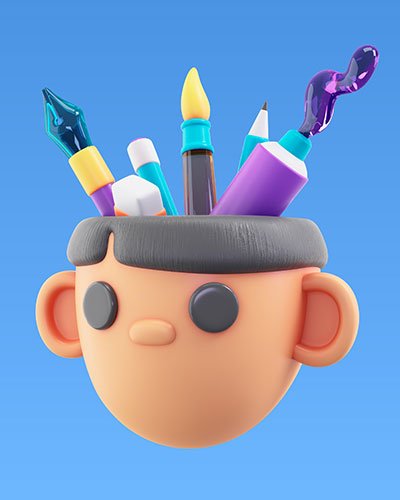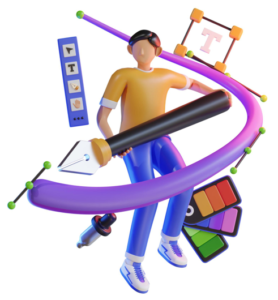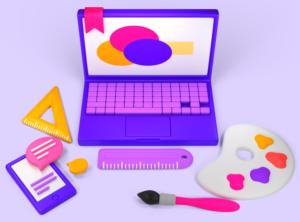

First impressions make all the difference in branding. It is so much more than just some collage of colours, fonts, and shapes. A logo is often the first thing a customer comes into contact with, telling much about the brand values, and expectations the brand sets. Design elements that go into well-designed logo can give an impression of trust, confidence, and a very long-lasting emotional connection.
Colour Is More Than Aesthetics
In this respect, colour is an important aspect of logo design because it has a lot to do with human emotions. Each colour represents a distinct emotion and can evoke various perceptions in a consumer. For example, red is usually associated with energy and passion, which is why brands like Coca-Cola use red to create excitement and arousal. The calm and environmental awareness of green has made Starbucks apply it to show off its social responsibility and accountability to the environment.
The wrong colour scheme may confuse or even alienate potential customers. Sometimes, brands come across the wrong colour combination or too many colours combined in one logo, which risks the dilution of the message’s meaning. One classic example of the successful use of colour for brands is IKEA. Its bright blue and bright yellow are eye-catching and provoke the feeling of reliability and accessibility. This strategy is sustained at all touch points- from the social media post design to a sign set in store- consistent with the same emotional response, regardless of where the customer experiences the brand.

Fonts Bring Tone and Personality
Fonts can say so much without really talking to the viewer. It remains the voice of your brand. A well-chosen font can make all the difference in making a brand stand out and talk to its targeted audience. Just look at how simple, clean, and modern Apple is, which reflects its core message of innovation and user-friendliness, whereas luxury brands like Chanel are very sleek, symbolising elegance and timelessness.
A wrong font will clash with a brand’s voice in relation to its visual identity. For instance, an asset management company that uses highly informal or comic fonts is surely not going to be taken seriously and is bound to lose all that credibility in a competitive market. So, typography needs to correspond quite well with your brand’s values to establish consistency throughout, whether it is a creative brochure design or website design.
Shapes Define the Silence
While fonts and colours add importance to the logo’s success, shapes that are used less often speak for themselves as the core of the brand. Shapes can be aligned with different emotions; circles may symbolise wholeness and unity, while sharp designs often feel more modern and energetic. FedEx is a great example of the successful use of shape. FedEx has an arrow between the ‘E’ and ‘x’ in its logo. The arrow perfectly symbolises speed and precision without embarrassing it in the viewer’s eyes.
Conversely, logos that heavily use complex forms may forfeit intelligibility and recognisability. Take, for instance, the 2012 London Olympics logo, which was launched with a very abstract design that created confusion and criticism. This illustrates how sometimes simpler is better when used in different mediums, perhaps even digital assets for print marketing, such as company brochure design.
Logos don’t just appear on websites or hoardings; they also appear in brochures, product packs, and even design spaces. Best of all, good brands know precisely how that will play out consistently, every time. Whether it’s UI and UX design for an application or stall design for a physical event, the logo needs to remain adaptable yet recognisable.

For instance, Nike’s swoosh is soft yet deep. This same element cuts across all the digital or product platforms and maintains this consistency. This means that it will always be present in support of their identity and, therefore, immediately perceived. On the other hand, those brands that change their logos too frequently or apply them in a rough-and-ready manner on multiple platforms may not be able to establish consistent brand identity. While working on creative branding, such as brand collateral design and digital marketing services, it’s crucial to maintain flexibility in design while ensuring that the logo remains recognisable across all platforms.
Creating a logo that tells your brand’s story isn’t just about good design. It’s about understanding your brand’s personality and connecting with your audience on an emotional level. Purple Tuche Brand Solutions stands here to interpret a brand’s vision into meaningful, compelling visual identities that resonate deeply with audiences. From web design services to brand communication strategy, your brand will connect with the audience at every level through our holistic approach. We understand how your logo fits into your overall brand strategy and how it will be splashed across various platforms.
Conclusion
Designing a logo is not just about creating something beautiful. It’s more of a process for the symbol to convey the message that your brand wants to say to its targeted audience, emotionally engaging hearts and standing out beyond the crowd. When done right, it actually becomes one of the most critical assets that guarantee long-term success in your brand.
Looking for a logo that makes a lasting impression? Contact us today and let’s create something extraordinary together!
Frequently Asked Questions
Colours evoke emotions and perceptions, helping brands communicate their values and personality. For example, red signals energy and passion, while green conveys calmness and environmental awareness.
Fonts are the voice of a brand, influencing how it is perceived. Clean, modern fonts like Apple’s suggest innovation, while elegant fonts like Chanel’s reflect sophistication and timelessness.
Shapes can symbolize different emotions and ideas. Circles often represent unity, while sharp designs feel modern and energetic. Simple, memorable shapes like Nike’s swoosh help maintain consistent brand identity across platforms.
Consistent use of colours, fonts, and shapes builds trust, reinforces brand values, and ensures recognisability, making your brand stand out and connect with audiences.
A mismatched or overly complex colour scheme can confuse or alienate customers, diluting the brand’s message and reducing its impact.
The right font aligns with brand values and enhances credibility, while inappropriate fonts can clash with a brand’s voice and undermine its professionalism.
Yes, overly complex shapes can reduce recognisability and create confusion, especially if the design is not simple and adaptable across different mediums.
When used effectively, these elements create a cohesive logo that communicates the brand’s personality, resonates emotionally, and remains memorable across all platforms.
Stay in touch
Well send you latest business & marketing news, inspiration, cost finds.

